Observance of the
Divines is more of a fact of life than a religion throughout the
Archipelago of Bennoria. Most of those called to a religious vocation will dedicate themselves to a local deity. Yet there are those who feel called to be in service to the Divines. They help perform the various rites dealing with the changing of the seasons and other general services like giving children a basic education. Most acolytes feel called to a specific Divine:
Divine Spring,
Divine Summer,
Divine Autumn, or
Divine Winter. A rare few will be in service to all equally.
Acolytes of the Divines are recognizable by their distinct vestments and iconography. Each Acolyte has a short robe worn over a long tunic and pants typically in the colors of their Divine patron. Rural acolytes will often wear common clothing while urban acolytes will have tailored outfits with intricate designs. Along with their robes, each Acolyte also has a hooded mantle that they pull up during their religious duties. Footwear is up to each person, though novice acolytes are provided with a pair of simple sandals with their initial robes which they often become accustomed to.
Acolytes of Spring
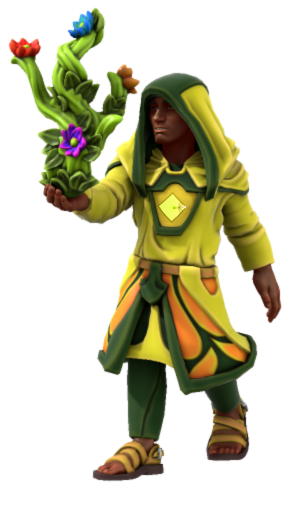
Acolyte of Spring
Attired in bright yellows, Acolytes of Spring seem to always stand out in a crowd. Embodying the rejuvenating energies of Spring and the Dawn, their upbeat personalities are reflected in the bright robes they wear. With the green undertones seeming like a flower stem, many have taken to referring to these acolytes as the Flowers of Spring.
The verdant sprouts of new blooms open their colorful faces to the golden light of dawn. — From "Chant of the New Dawn"
Acolytes of Summer
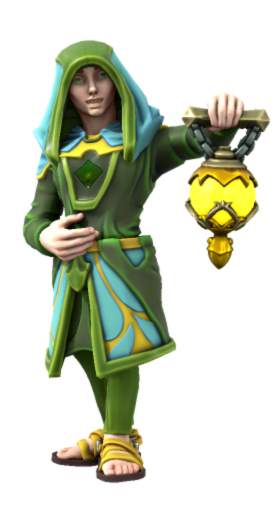
Acolyte of Summer
The deep greens and light blues of Acolytes of Summer bring to mind lush grass under blue skies on warm summer days. Often these robes are made from thinner linens to keep cooler during these summer months. Even in the depths of winter Acolytes of Summer will still be found wearing sandals and thinner robes, earning them the nickname Beacons of Summer.
The noonday sun warms all, watching as they grow to fullness.— From "Summer Soliloquy"
Acolytes of Autumn
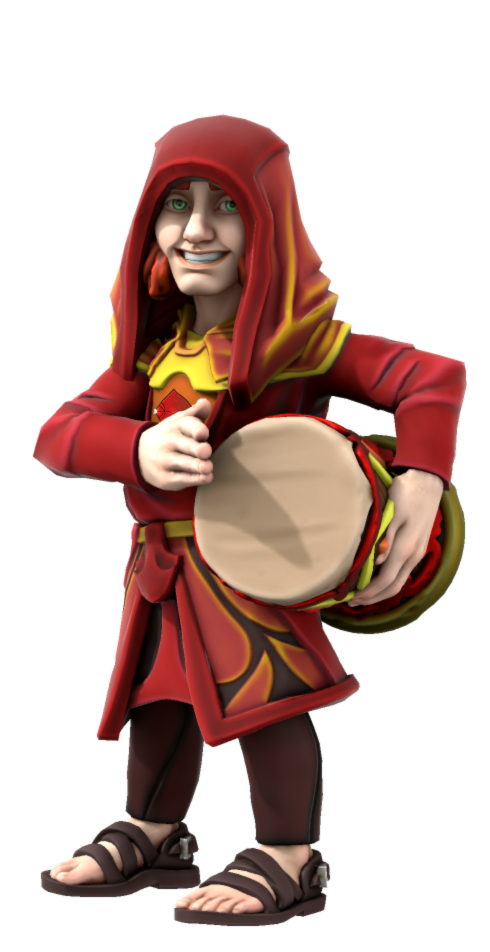
Acolyte of Autumn
The boisterous personalities of the Acolytes of Autumn are not the only thing that makes them stand out in a crowd. Attired in bright reds and oranges, these Acolytes reflect the vibrant splash of color the season is famous for. Bright reds, vibrant oranges and brilliant yellows have earned them the moniker the Flames of Autumn.
Red and Gold leaves
dance upon the wind
to the tune of chimes
in the branches of the trees.
Dance! ~ Sing! ~ Celebrate!
Autumn is here! — From "Autumn's Hymn"
Acolytes of Winter
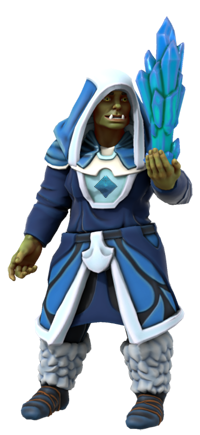
Acolyte of Winter
The thicker blue and white robes of the Acolytes of Winter help insulate them during the cold months. They have been known to line their robes with thick fleece and sometimes even edge their hoods with fur. The rest of the year they typically wear a set of wool vestments, even during the hottest of summers. They tend to wear boots more often than the traditional sandals. The quiet and serene demeanor for these Acolytes is often misconstrued as coldness so many call them the Shards of Winter.
Lay down your weary head through the wintery night. Rest now from your struggles before the world dawns anew. — From "Winter's Lullabye"
Acolytes of the Divines
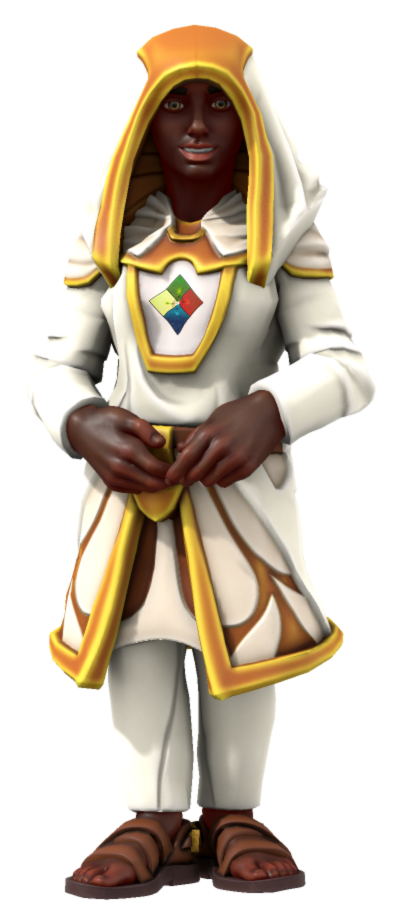
Acolyte of the Divines
The center meeting point of the four Divines is always represented as a white circle. The vestments of those called to serve all Four equally are therefore a bright white with accents of gold. The full four-colored symbol of the Divines is prominent on the front of their robes, a splash of color on a pure white background. The white seems to almost shine as they move about, making the rare sighting of these Acolytes quite noticeable even in the largest of crowds. Unlike the other acolytes, those in the white have no nickname and are simply called Divine Acolytes
Is Autumn more important than Spring?
Can Day truly exist without Night?
Each waxes and wanes according to the will of the Divines for They seek harmony in all things.
I hereby vow to dedicate my life to the Divine Harmony. May They guide my steps from this day forth. — From the Oaths of the Divine Acolytes
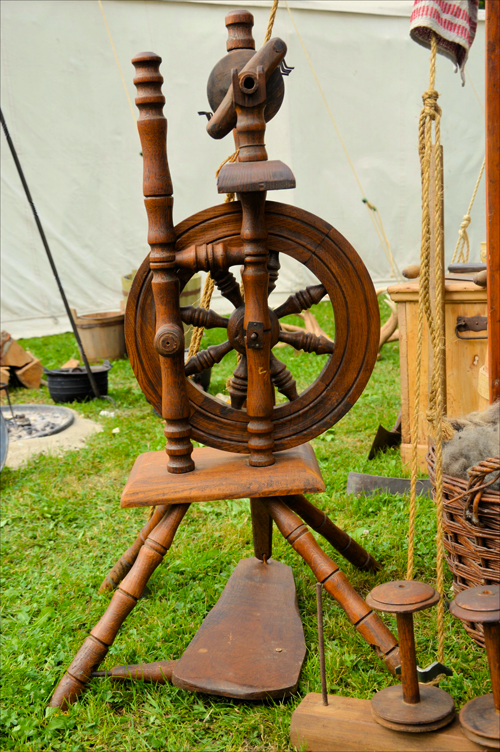
Divine Vestments are made at the
Emstead Sanctuary of the Divines, exceptions being those of
New Moram,
Kuthary, and
Winterscot. The Sanctuary maintains a flock of Emstead Sheep for the sole purpose of shearing their wool. Every spring during the
Bloomtide Festival the acolytes include this yearly sheering during their rites. For the next month they work tirelessly to
scour and
card the wool. During the
Suncrest Festival a large ceremony is performed with the dying of the cleaned wool. Acolytes for each sect take charge of their colors. The rest of the summer is spent
spinning and
weaving the wool into fabric. Any completed fabric is then dedicated during the
Feast of Melodies. Often there will be extra thread that they continue to weave throughout the year but the fabric will not be used until it has undergone the rites during the next Feast of Melodies. During the Autumn any finished fabrics are then sewn into the robes and mantels of the Divine Vestments. Once
Midwinter arrives, any completed Vestments are then blessed during a full two day long ceremony. Only then are the Vestments considered complete and are ready to be sent out to various temples and sanctuaries when requested. Incomplete garments are finished during the next year, but must be consecrated next Midwinter before they can be worn.
History
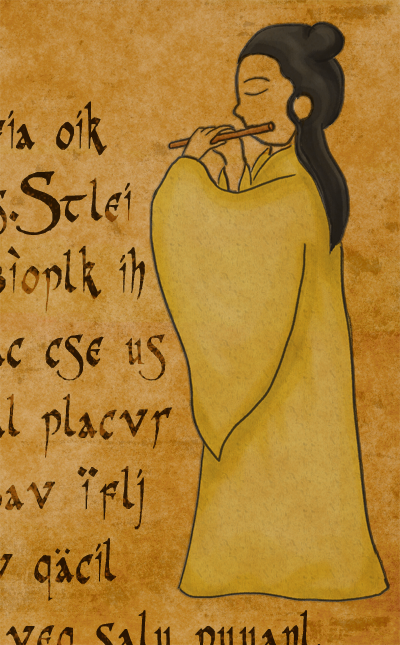
Ancient Text
The earliest pictorial depictions of the Divine Acolytes come from the oldest known records from the Age of Warring, though some think they may predate even that vast age. These depictions show a single acolyte in a simple, single-colored robe matching which Divine they were in service to. Written accounts, few that there are, describe them as seeming no different from the average person except for an amulet bearing the symbol of the Divines. This has led to some debate: were the artists taking creative license, are the written accounts incomplete, or if this was simply because each acolyte was on their own with no official organization to unify them.
As time went on, these depictions show the addition of a plain hooded cloak, though only when shown in scenes of the outdoors. These cloaks were not colored like their robes so were likely not specialized. By this point the written descriptions match any artwork so it is believed that the acolytes had begun to organize. They also started appearing in pairs or groups more and more.
The next big change occurred near the start of the Divine Age. The vestment robes changed from a single, ankle length garment to a combination of pants and a shorter, belted tunic. These were the same colors the robes had previously been, with the belts believed to be uncolored leather. They still sported the full hooded cloak, but these cloaks had become colored to match their divine calling.
The Emstead Sanctuary of the Divines was founded about a hundred years before
The Fall and the vestments took on their last major change into what is seen in modern times. The hooded cloak was changed to a short hooded mantle around the shoulders, worn both indoors and out. A knee-length outer robe was added over the tunic, now showing the decorative accents in their secondary colors. Each robe also now depicted the iconography in the center, reducing the need for extra amulets or pendants.









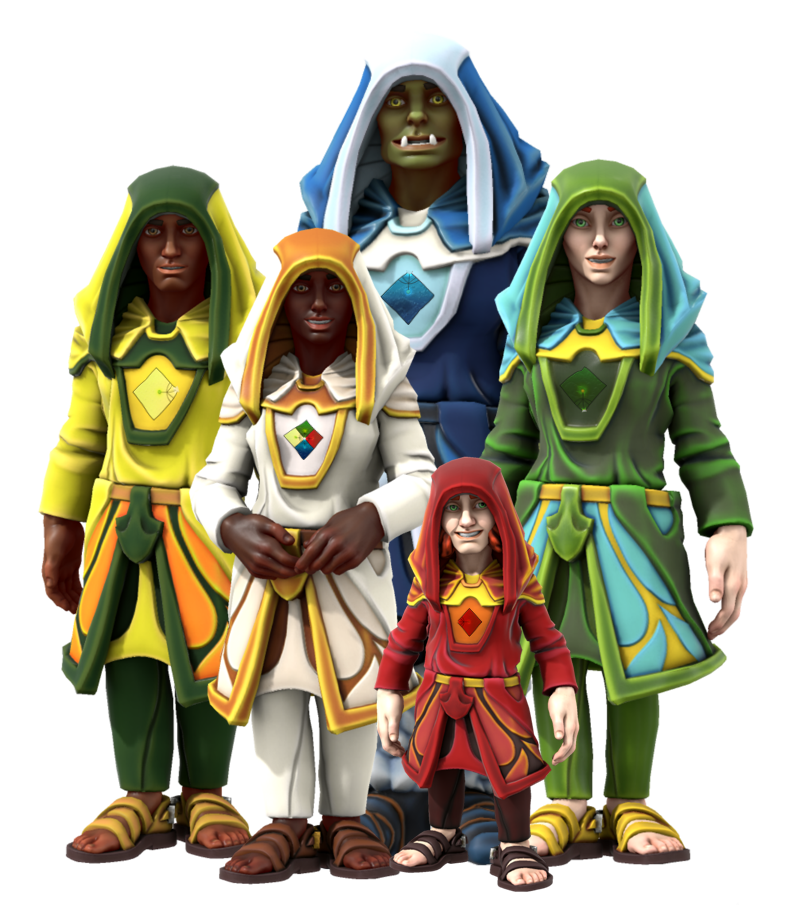
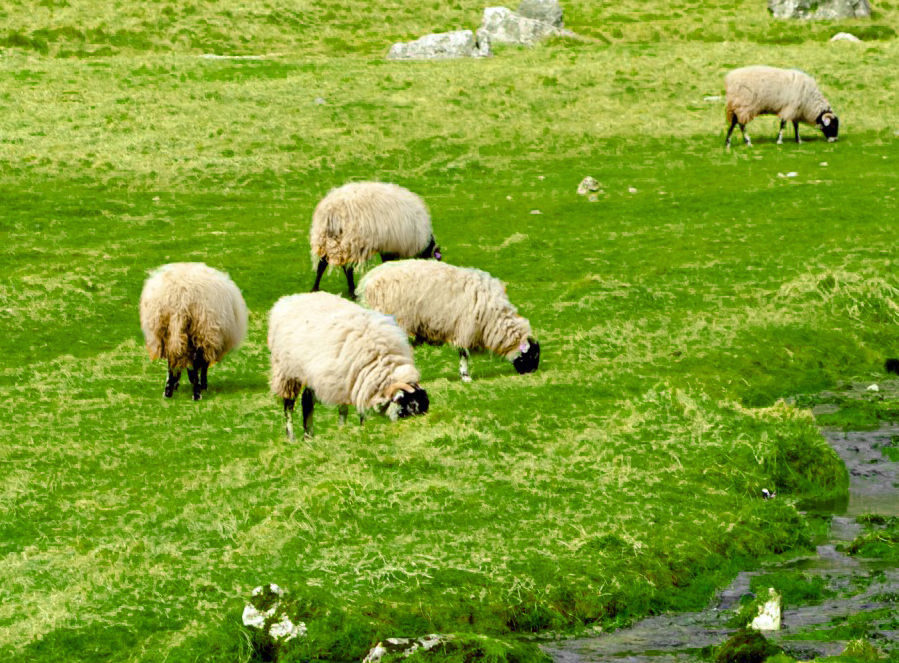










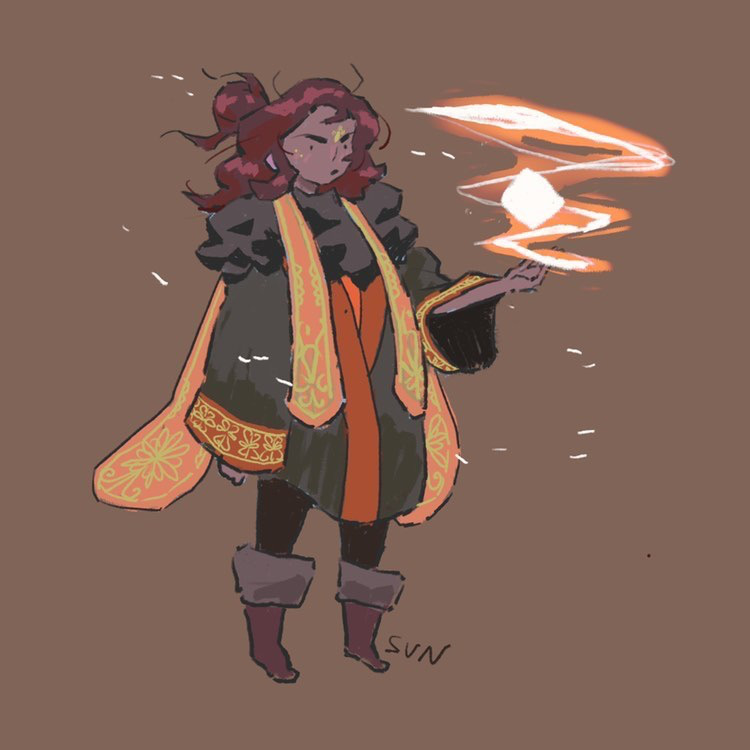




Great start! Those are nice costumes and I like the significance of the colours and the nickname " Flowers of Spring." :D I think you can add a short explanation of how the Divines are different from other gods.
So, looking back now that it's done, maybe I should add that. I was hoping the link to the pantheon page would cover that thought. Thoughts?
Costuming Challenge Article: Divine Vestments
I think the article is great as it is :D I don't remember what prompted my question, but I think your new introduction is covering the elements that are important to know about the Divines and their acolytes. I also like all the new sections you've added, especially the manufacturing process :D "Once Midwinter arrives, any completed Vestments are then blessed during a full two day long ceremony." What happened to the uncompleted clothes? Do they continued to be made through the rest of winter but they can't be worn until the next Midwinter or are they discarded?
Oh my, thought I had that in there. Thanks for catching that! It's the same as the fabric, they continue working on sewing through the rest of the following year but it can't be worn until after the next midwinter. Will be sure to add that.
Costuming Challenge Article: Divine Vestments